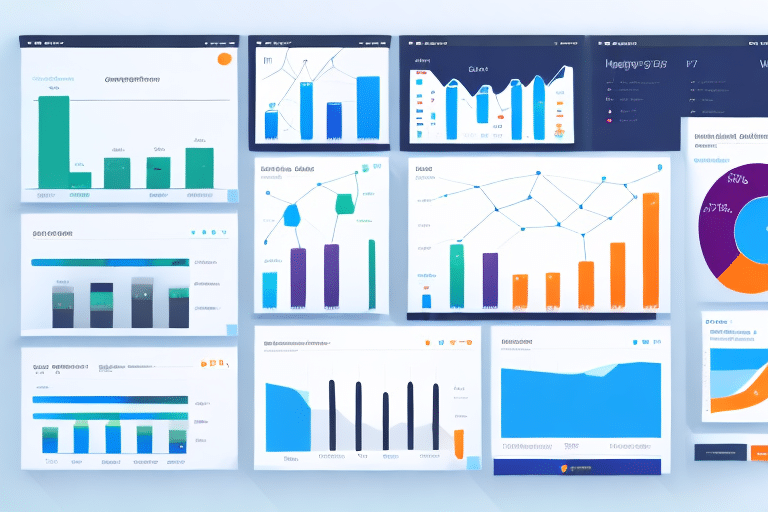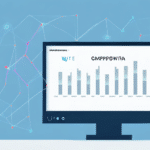Managing Increased Traffic in Ecommerce Scaling
As ecommerce businesses grow, they inevitably face the challenge of managing increased traffic. The greater the number of visitors to an ecommerce site, the greater the potential for sales – but also the greater the challenges in ensuring that the site doesn’t falter or crash under the weight of that traffic. This article examines the key challenges businesses face when managing increased traffic during ecommerce scaling and outlines best practices for keeping both the site and customers running smoothly.
Why Ecommerce Scaling Matters
Ecommerce scaling is the process of expanding an ecommerce business, driven by factors such as increased sales, new products, and market expansion. Proper scaling is crucial for business growth, as failure to scale appropriately can lead to missed sales opportunities, increased customer dissatisfaction, and damage to the business’s reputation.
One of the key benefits of ecommerce scaling is the ability to reach new markets and customers. By expanding your business, you can tap into new demographics and geographic regions, leading to increased sales and revenue. Additionally, ecommerce scaling helps businesses stay competitive in a rapidly changing market by allowing adaptation to new trends and technologies. However, it's important to approach ecommerce scaling strategically to mitigate challenges such as increased operational costs and the need for additional resources.
Benefits of Scaling
- Access to new demographics and geographic regions
- Increased sales and revenue
- Enhanced competitiveness through adaptation to new trends and technologies
The Impact of Increased Traffic on Ecommerce Businesses
Increased traffic is a double-edged sword for ecommerce businesses. On one hand, it represents a potential for increased sales and revenue. On the other hand, if a site isn't prepared for the influx of visitors, it can lead to site failures and customer dissatisfaction, resulting in lost sales and damage to the company’s reputation. Research from IronsideIT shows that even a one-second delay in page load time can result in a 7% reduction in conversions.
Businesses need a comprehensive plan for managing increased traffic during ecommerce scaling. One effective strategy is investing in a content delivery network (CDN). A CDN is a network of servers located in different geographic locations that work together to deliver content to users more quickly and efficiently. By using a CDN, ecommerce businesses can reduce the load on their own servers and ensure that their website is accessible to customers around the world. Additionally, CDNs can help improve website performance by caching frequently accessed content and optimizing images and other media for faster loading times.
Benefits of Using a CDN
- Reduces server load and downtime
- Improves website accessibility globally
- Enhances website performance through caching and media optimization
Key Challenges in Managing Increased Traffic
Managing increased traffic during ecommerce scaling presents several key challenges for businesses, including:
- The need for a scalable website infrastructure
- Optimizing website speed to reduce downtime and improve user experience
- Developing effective content marketing strategies
- Leveraging social media to drive traffic to the site
- Creating effective email marketing campaigns during high-traffic periods
- Optimizing checkout processes for increased conversions
- Managing inventory to meet demand during high-traffic periods
- Providing exemplary customer service during peak periods
- Utilizing analytics to measure and optimize performance
- Preparing for future scalability
Additionally, businesses must ensure website security. With more traffic comes a higher risk of cyberattacks, such as DDoS attacks, which can cause website downtime and damage a company's reputation. Implementing strong security measures, such as firewalls and SSL certificates, is essential to protect the website and customer data from potential threats.
Common Challenges
- Scalable infrastructure
- Website speed optimization
- Content and social media marketing
- Email marketing effectiveness
- Checkout process optimization
- Inventory management
- Customer service excellence
- Performance analytics
- Future scalability planning
- Website security
Importance of Website Infrastructure in Ecommerce Scaling
One of the most crucial aspects of managing increased traffic during ecommerce scaling is ensuring the site’s infrastructure is scalable. A scalable infrastructure can easily accommodate increased traffic without any downtime or performance issues. Recommendations for scaling infrastructure include:
- Investing in a dedicated server
- Choosing a reliable hosting provider with a 99.9% uptime guarantee
- Implementing a content delivery network to reduce server load times
- Adding a load balancer to distribute traffic between servers
- Utilizing cloud hosting for scalability
Website infrastructure is not just about handling increased traffic; it also plays a crucial role in providing a seamless user experience. A slow-loading website or one that frequently crashes can lead to frustrated customers and lost sales. Regularly monitoring and optimizing the website infrastructure ensures it performs at its best.
Scalable Infrastructure Solutions
- Dedicated servers for exclusive resources
- Reliable hosting with high uptime guarantees
- CDNs for optimized content delivery
- Load balancers to manage traffic distribution
- Cloud hosting for flexible resource management
Optimizing Website Speed for Better User Experience
Optimizing website speed is one of the most effective ways to manage increased traffic during ecommerce scaling. Slow loading speeds can lead to customer dissatisfaction and abandoned carts. Strategies to optimize website speed include:
- Compressing images and files to reduce load times
- Minimizing the use of plugins and other resources that can slow down the site
- Enabling caching to reduce server requests
- Implementing a content delivery network to reduce latency
- Utilizing browser caching to reduce the number of server requests
According to Google PageSpeed Insights, optimizing website speed can significantly enhance user experience and SEO rankings.
Speed Optimization Techniques
- Image and file compression
- Plugin and resource minimization
- Caching mechanisms
- CDN implementation
- Browser caching
The Role of Content Marketing in Ecommerce Scaling
Effective content marketing is crucial for helping ecommerce businesses manage increased traffic during scaling. Content marketing attracts and retains customers, improves search engine rankings, and drives traffic to the site. Effective content marketing strategies include:
- Creating engaging and informative blog content
- Developing product videos and demos
- Offering educational resources for customers
- Providing tutorials and how-to guides for using products
- Offering incentives, such as discounts, to encourage customers to return to the site
According to the Content Marketing Institute, businesses that prioritize content marketing experience significantly higher conversion rates.
Content Marketing Strategies
- Engaging blog posts
- Product videos and demonstrations
- Educational resources
- Tutorials and how-to guides
- Incentives for customer retention
Effective Social Media Strategies to Drive Traffic to Your Ecommerce Site
Social media is a powerful tool for driving traffic to ecommerce sites during periods of scaling. Effective social media strategies include:
- Creating compelling, shareable content to attract new customers
- Engaging with customers and followers to build relationships
- Using social media analytics to track and measure performance
- Partnering with influencers and bloggers to reach new audiences
- Using targeted social media ads to drive traffic and sales
Studies from Statista show that social media platforms are increasingly effective in driving ecommerce traffic and conversions.
Social Media Tactics
- Shareable and engaging content
- Customer and follower engagement
- Performance tracking with analytics
- Influencer and blogger partnerships
- Targeted social media advertising
Leveraging Email Marketing to Increase Sales During Peak Traffic Periods
Email marketing is an effective way to increase sales during high-traffic periods when ecommerce businesses are scaling. Effective email marketing strategies include:
- Sending personalized and relevant emails to customers
- Offering incentives, such as coupons or free shipping, to encourage customers to return to the site
- Cross-selling and upselling products based on customer purchase history
- Sending abandoned cart emails to remind customers of items they left in their cart
- Segmenting email lists to target specific customer groups with relevant messaging
According to Mailchimp, personalized email campaigns can drive higher engagement and conversion rates.
Email Marketing Techniques
- Personalization and relevance
- Incentives for return visits
- Cross-selling and upselling
- Abandoned cart reminders
- List segmentation for targeted messaging
Optimizing Checkout Process for Increased Conversions
The checkout process is a critical aspect of ecommerce, and optimizing it can help businesses improve conversions during periods of scaling. Ways to optimize the checkout process include:
- Streamlining the checkout process by eliminating unnecessary steps
- Offering guest checkout options to reduce friction for new customers
- Providing clear and concise instructions throughout the checkout process
- Creating mobile-friendly checkout options to accommodate customers on the go
- Offering multiple payment and delivery options to suit different customer preferences
Research from Shopify indicates that simplifying the checkout process can significantly reduce cart abandonment rates.
Checkout Optimization Strategies
- Eliminating unnecessary steps
- Guest checkout options
- Clear instructions
- Mobile-friendly checkout
- Multiple payment and delivery options
Balancing Inventory Management with Increased Demand During Peak Traffic Times
Effective inventory management is crucial for ensuring ecommerce businesses can meet demand during periods of scaling and increased traffic. Ways to balance inventory management during peak periods include:
- Using inventory forecasting tools to predict demand and adjust inventory levels accordingly
- Partnering with suppliers and vendors to ensure a steady supply of products
- Increasing safety stock levels to accommodate unexpected spikes in demand
- Implementing real-time inventory tracking and management systems
- Providing regular updates on product availability to customers to manage expectations
According to Business News Daily, accurate inventory management can enhance customer satisfaction and reduce operational costs.
Inventory Management Techniques
- Demand forecasting tools
- Supplier and vendor partnerships
- Safety stock level adjustments
- Real-time tracking systems
- Transparent product availability updates
Best Practices for Customer Service During High-Traffic Periods
Managing customer service during high-traffic periods is critical for maintaining customer satisfaction and loyalty. Best practices for customer service during high-traffic periods include:
- Training customer service staff to handle high volumes of inquiries and support requests
- Providing multiple channels for customer support, such as phone, email, and live chat
- Monitoring social media and other online channels for customer feedback and inquiries
- Offering self-service options, such as a knowledge base or FAQ section, for customers to find answers to common questions
- Providing regular updates and communication to customers on order status, shipping times, and any potential delays
According to Zendesk, effective multi-channel support can enhance customer experience and loyalty.
Customer Service Strategies
- Staff training for high inquiry volumes
- Multiple support channels
- Social media monitoring
- Self-service resources
- Regular customer communication
Utilizing Analytics to Measure and Optimize Performance
Measuring site performance and analyzing data can help ecommerce businesses optimize their strategies during periods of scaling and increased traffic. Ways to utilize analytics include:
- Tracking website traffic and conversion rates to identify areas for improvement
- Using tools like Google Analytics to track user behavior and identify areas of the site that may be causing performance issues
- Monitoring social media and other online channels for customer feedback and inquiries
- Measuring the success of email marketing campaigns and adjusting strategies accordingly
- Using A/B testing to test different strategies and determine what works best for the business
According to Forbes, data-driven decision-making can lead to more effective strategies and better business outcomes.
Analytics Tools and Methods
- Website traffic and conversion tracking
- Google Analytics for user behavior insights
- Social media and online channel monitoring
- Email campaign performance measurement
- A/B testing for strategy optimization
Preparing for Future Scalability
Businesses must actively prepare for future scalability to ensure continued growth without encountering major challenges. Ways to prepare for future scalability include:
- Utilizing cloud-based hosting and infrastructure to accommodate future growth
- Developing a comprehensive disaster recovery plan to ensure business continuity in the event of an outage or other unexpected issue
- Regularly assessing and adjusting site performance and strategy to optimize for growth
- Partnering with external providers to handle aspects of ecommerce, such as payment processing, to reduce strain on the business’s internal infrastructure
According to IBM, proactive scalability planning ensures businesses can handle growth efficiently and sustainably.
Scalability Preparation Strategies
- Cloud-based hosting solutions
- Comprehensive disaster recovery plans
- Regular performance and strategy assessments
- External partnerships for key ecommerce functions
Conclusion: The Importance of Proactive Planning in Managing Increased Traffic During Ecommerce Scaling
Managing increased traffic during ecommerce scaling is a complex and multifaceted challenge. Businesses can mitigate this challenge by:
- Investing in scalable infrastructure
- Optimizing website speed
- Developing effective content marketing and social media strategies
- Leveraging email marketing
- Optimizing the checkout process
- Balancing inventory management
- Providing effective customer service
- Utilizing analytics
- Preparing for future scalability
By taking a proactive approach and focusing on these key areas, businesses can ensure they are well-positioned to handle the challenges of ecommerce scaling and efficiently manage increased traffic. This strategic planning not only supports current growth but also sets the foundation for sustained long-term success.




















